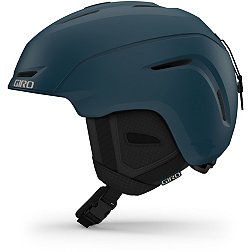Parts of a Ski Helmet
Before hitting backcountry, learn more about the anatomy of your ski helmet:
- The helmet shell is the outer layer of your helmet. This serves as the barrier of protection against abrasions, impact and sharp objects. The latest materials, such as ABS plastic, feel remarkably light without compromising strength.
- The helmet liner is generally composed of a responsive foam that absorbs shock upon impact. Many liners are made of the material expanded polystyrene (sometimes abbreviated EPS) foam.
- The helmet venting system ensures your helmet remains breathable and comfortable during use.
Helmets are available as both in-mold and injection-molded. In-mold helmets are built with the shell and foam affixed to one another in a single molding process. Injection-molded helmets are separately molded together for added impact protection.
Your snow helmet is a critical piece of safety equipment for your ride. Remember, after a serious fall or hit, your helmet should be discarded and replaced. Major impact can compress the foam lining of your helmet, making it less effective.
The right fit is essential. To determine the correct helmet size, position a tape measure one 1 inch above the eyebrows and measure around your head. Consult product information for specifics on sizing.
Your helmet should fit snugly yet comfortably. Helmets should not sift when you move your head from side to side and there should not be a gap between the top of your goggles and the helmet. Always ensure your helmet is positioned low enough to protect your forehead.


















































